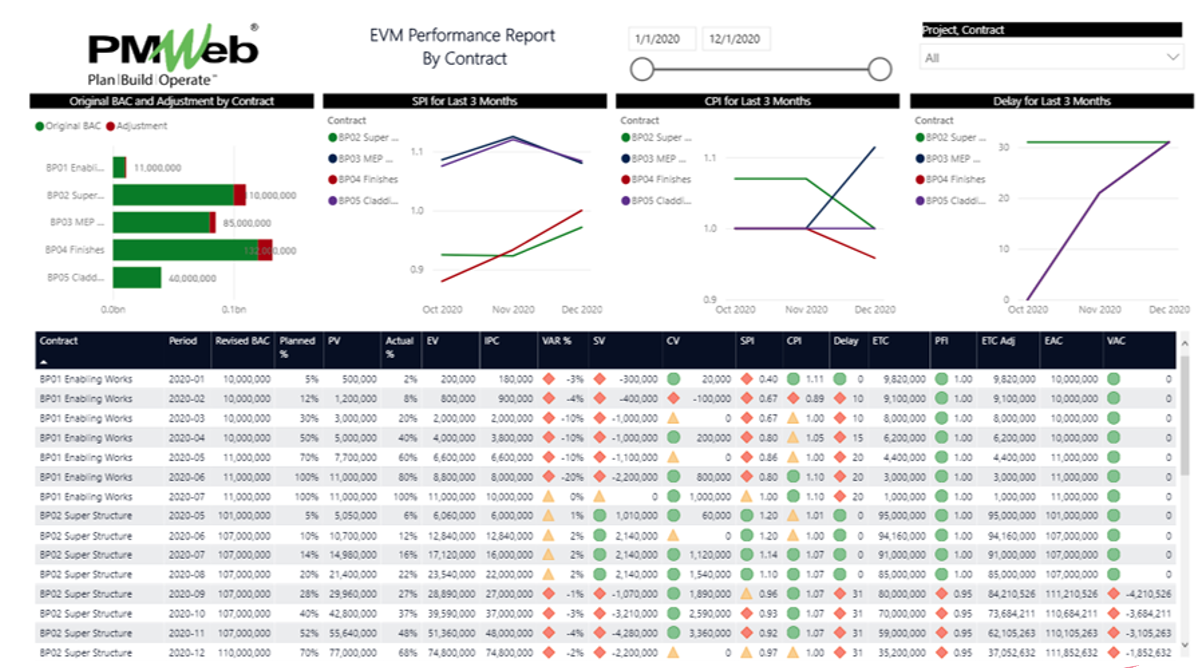As the construction contract commences, there will be three important processes that the JV Contractor needs to manage to be able to report the project’s financial performance. The first is the earned income (EI) for work the JV Contractor has invoiced the project owner for on the Income JV Contract, the second is the actual cost (AC) incurred by the JV Contractor in executing the work in place while the third for the earned value (EV) of the same executed work in place. The actual cost (AC) will include the actual cost from the interim payment certificates submitted by subcontractors, suppliers, JV contractor entities against the awarded commitment contracts. In addition, the actual cost will also include the actual cost captured in miscellaneous invoices and timesheets for labor and equipment resources that are not part of a commitment contract.

The Earned Income (EI) will be calculated using the PMWeb requisition module which is part of the Contract module used to capture the details of the JV Contract. The requisition module will be aligned with the Cost-Loaded Integrated Project Schedule which is one of the must submissions that the JV Contractor needs to make to the project owner. The cost-loaded schedule will detail the value of the earned income for works that the JV Contractor is planning to achieve during the project duration.
Each item in the requisition form will be linked to its relevant project schedule activity to enable importing the activity percent complete from the updated schedule at the end of each progress period. Multiply the JV Contract line items value with the reported percent complete will calculate the earned income for that period.
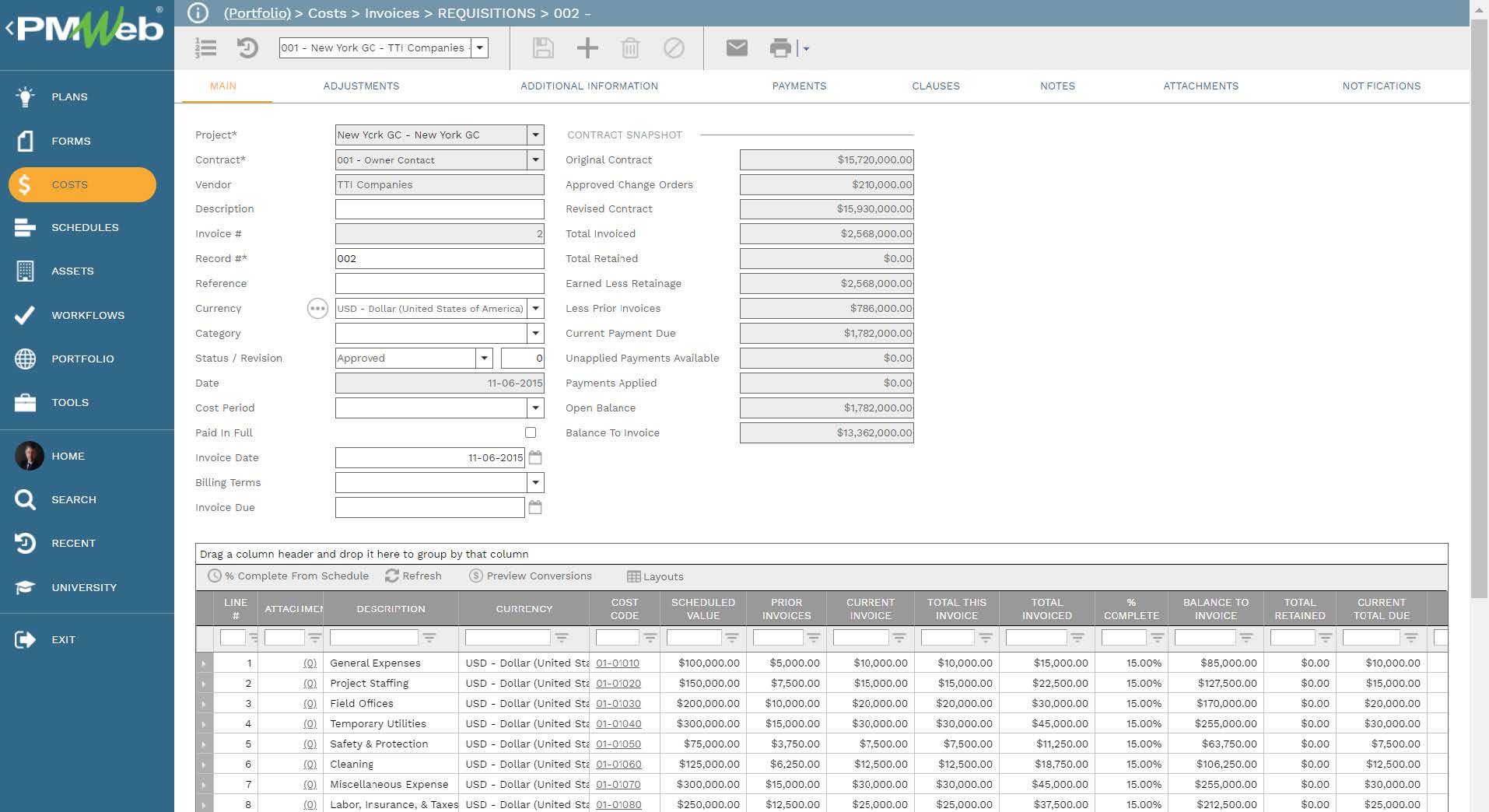
The same approach will be followed in capturing the Actual Cost (AC) from the commitment contracts. Those are the contracts with subcontractors, suppliers as well as for the scope of work bought from each JV Contract entity for works and services such as plant hire, labor resources, project management support, site management support among others.
For each commitment contract, the PMWeb progress invoice module will be used to capture the actual cost incurred for each progress period. Each line item in the progress invoice can be linked to the relevant activity in the integrated project schedule to automatically capture the percent complete value for the activity. This will ensure that the percent complete values used to calculate the Earned Value (EV) is the same percent complete values used to calculate the Actual Cost (AC).
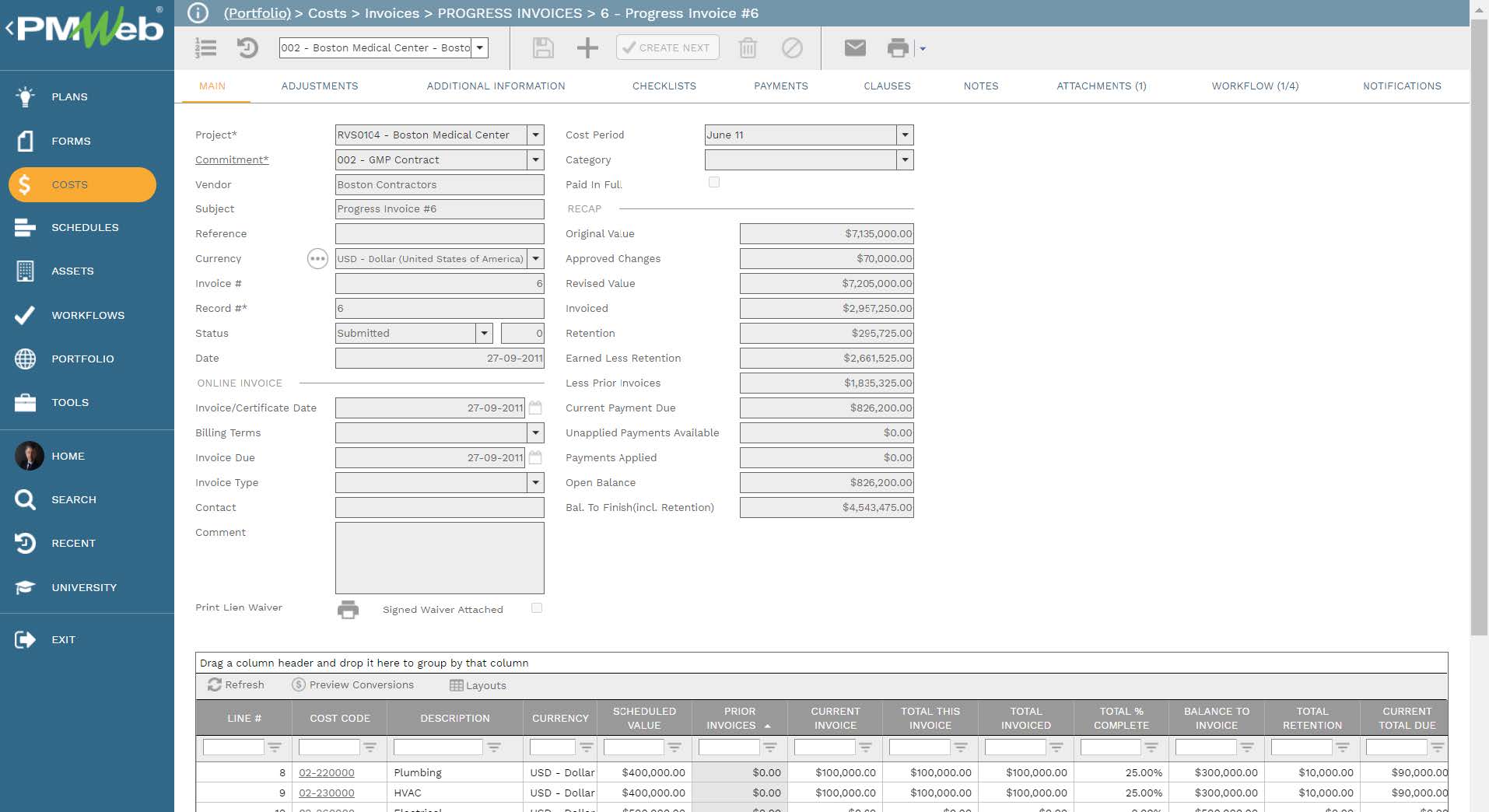
If the actual cost for some or all commitment contracts will be based on actual quantities in place rather than the integrated project schedule activities’ percent complete values, then PMWeb Joint Measurement or Production module needs to be used. This module allows capturing the actual quantities in place for a commitment contract line items on weekly basis. The joint measurement or production module is recommended for remeasured contracts or material supply contracts.
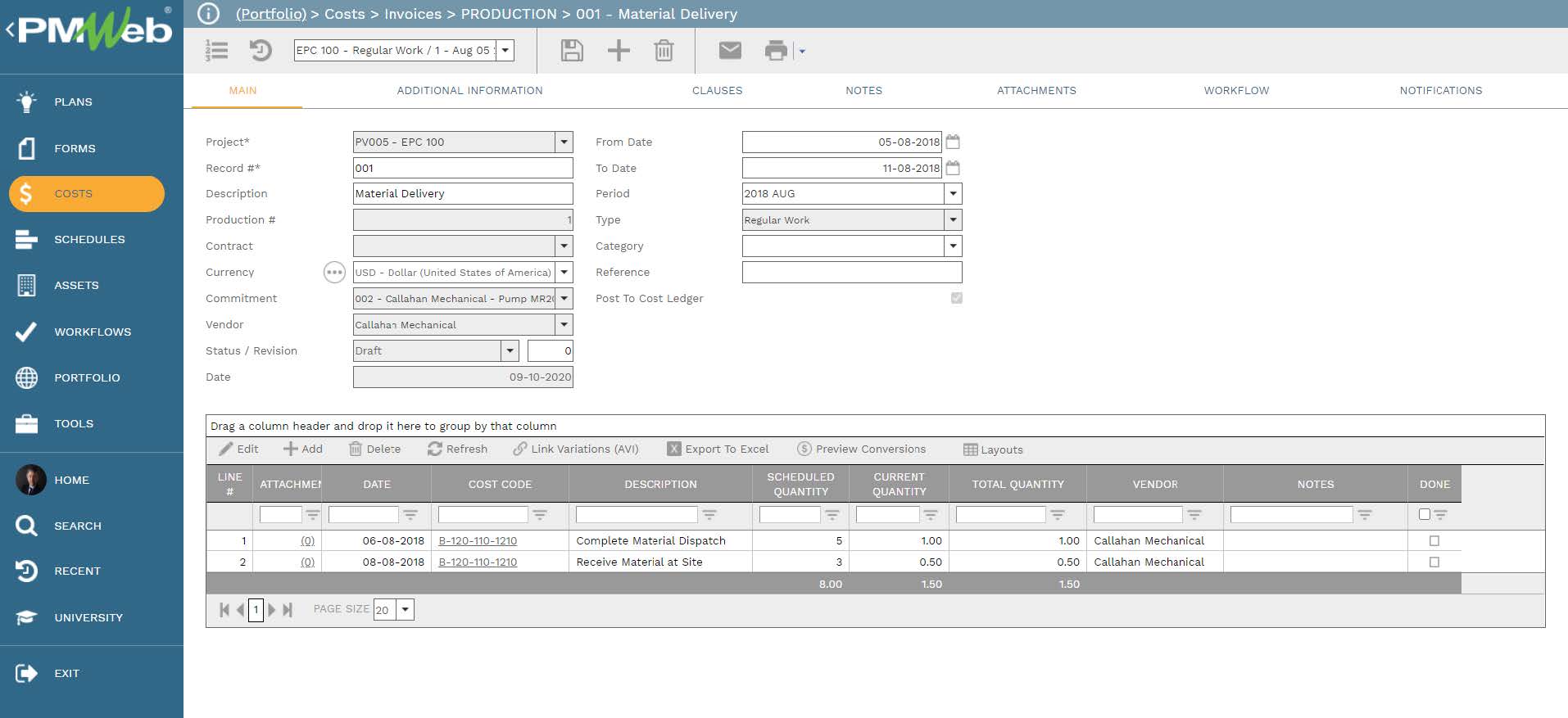
For labor and equipment resources that were not part of a commitment contract, the PMWeb timesheet module will be used to capture the actual hours spent. PMWeb allows defining the pay rates for those resource hours by resource name. Those pay types could include regular pay, overtime pay, weekend pay among others. The reported labor and equipment resources hours can be associated with their relevant project schedule activity.
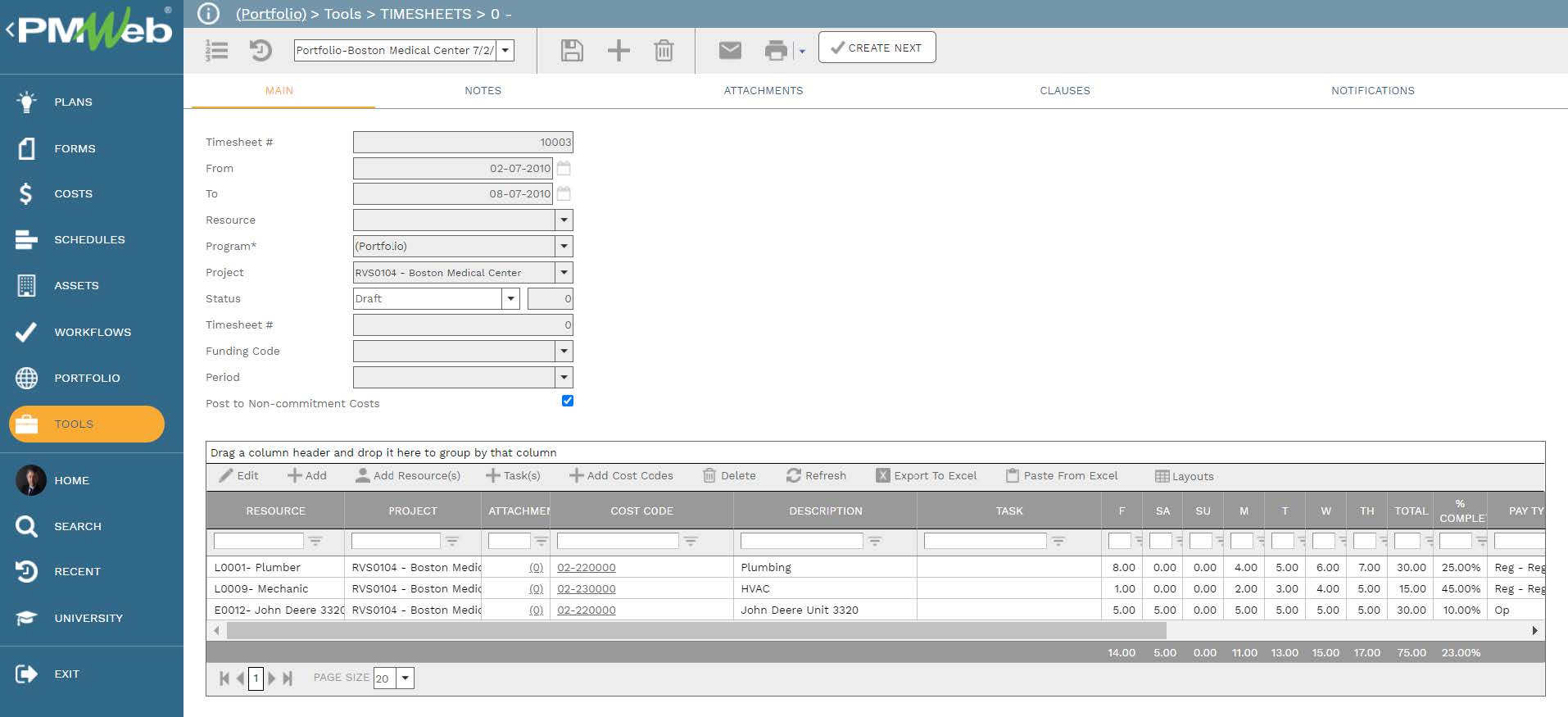
Finally, actual cost (AC) can be also incurred for works and services that are not part of any commitment contract that was awarded by the JV Contractor to the different entities involved in delivering the projects. Examples of those expenses could be permits, fines, catering for special events among others. For those expenses, the PMWeb miscellaneous invoices module will be used.
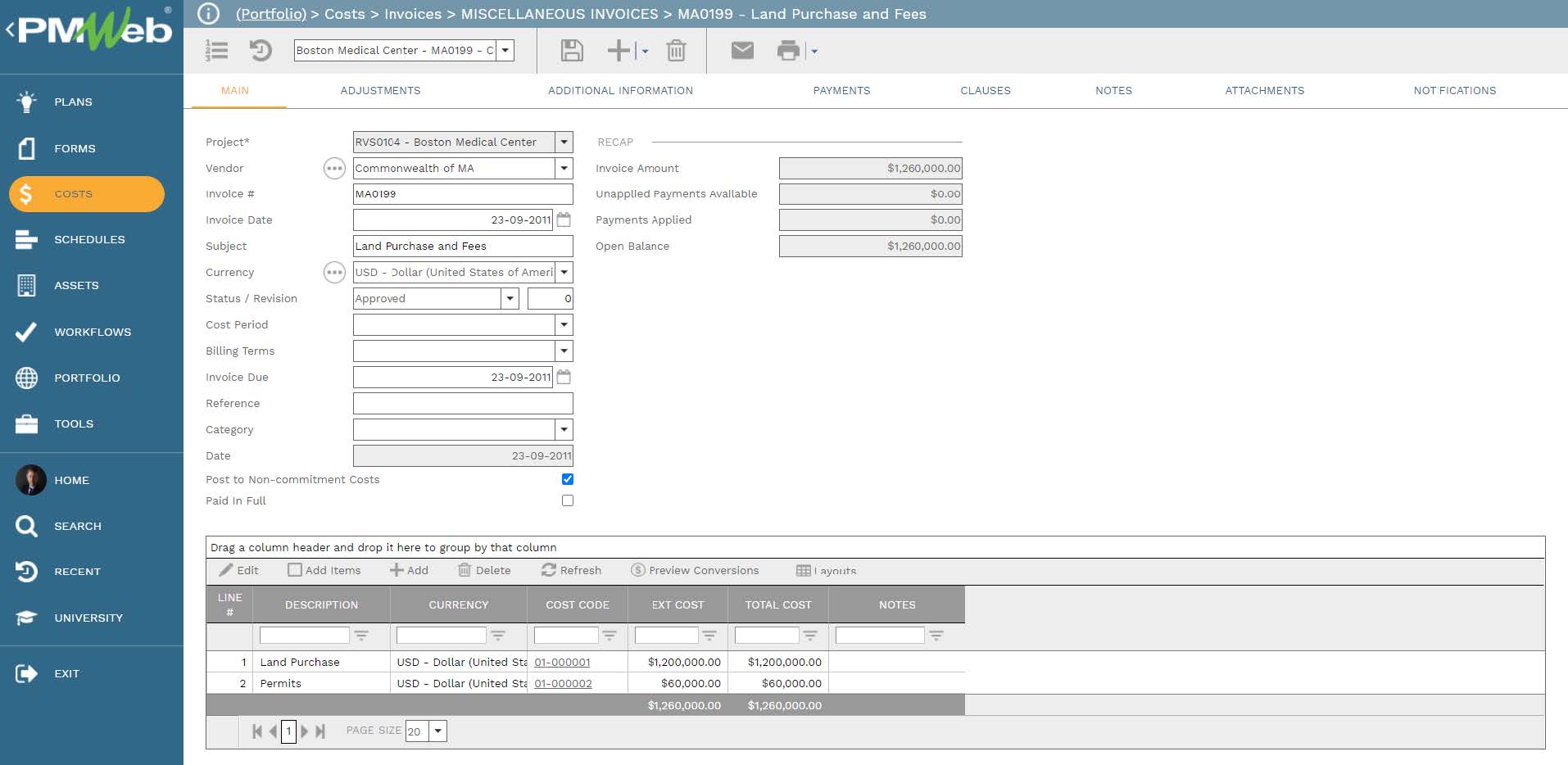
The third measure will be the Earned Value (EV) measure which equals the budget value for the line item multiplied by the relevant project schedule activity percent complete. It should be noted that the percent complete used for the Earned Income (EI), Actual Cost (AC) and Earned Value (EV) will be the same. The earned value (EV) will be calculated using the PMWeb Forecast module.
In addition, the Forecast module will be also used to assess the Estimated Cost to Complete (ETC) for the remaining scope of work of awarded commitments contracts that is beyond the already identified and considered potential change orders and pending commitment change orders. This module allows the JV Contractor to manually determine the additional expenses that need to be added to the calculated Estimated Cost to Complete (ETC) by subtracting the Earned Value (EV) from the Budget at Completion (BAC). The Forecast module can be also used to assign the Performance Factor Index (PFI) to adjust the Estimate To Complete (ETC) value for each Cost Breakdown Structure (CBS) level.
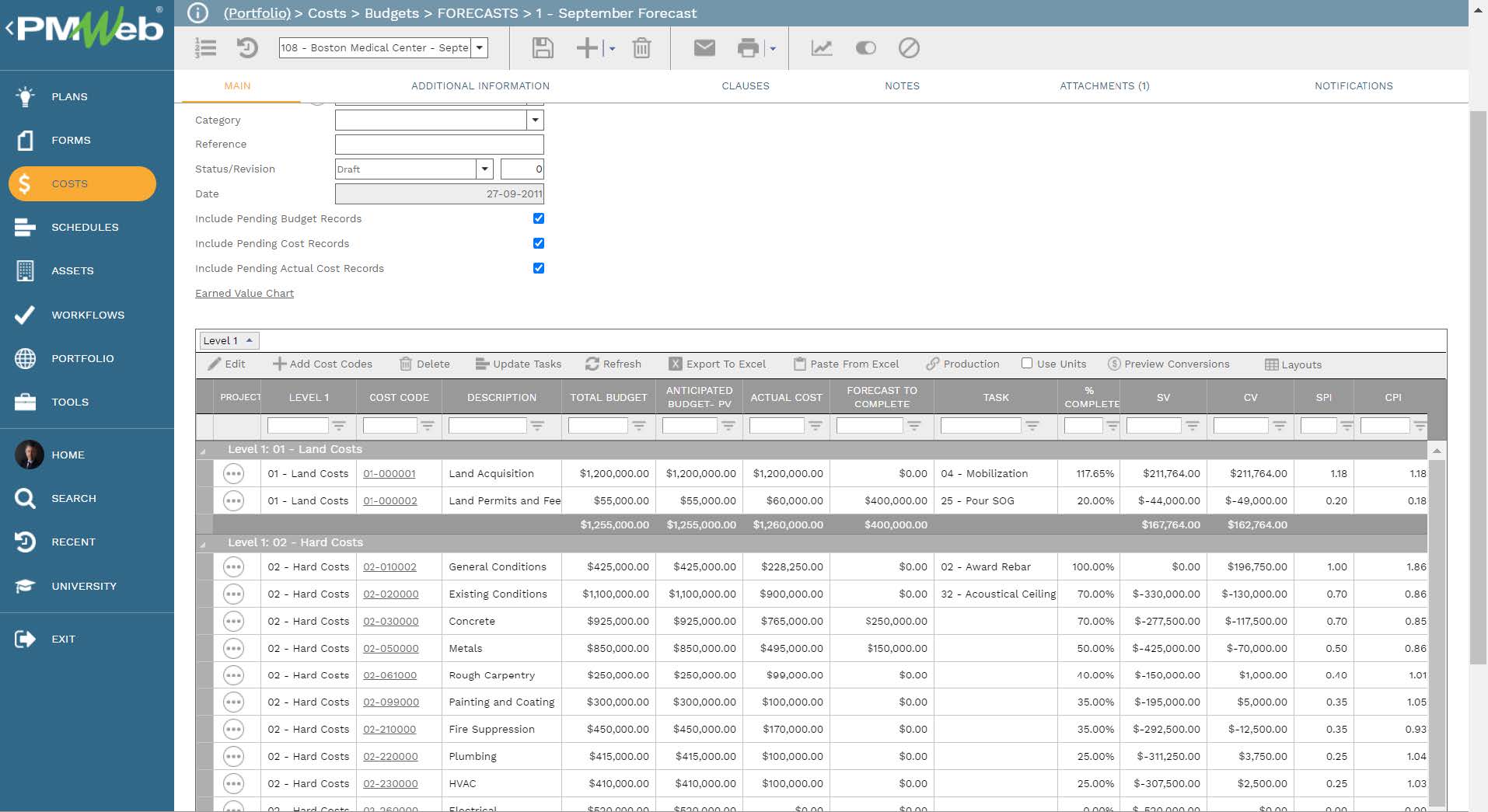
Similar to all other PMWeb business processes, output forms can be designed to each earned income and actual cost process to ensure that it has been formally communicated. Those processes include requisitions, progress invoices, miscellaneous invoices, joint measurement reports, and timesheets. Those forms can be printed and wet-signed or save as PDF files and then digitally signed used a digital signature application like DocuSign. It should be noted that in addition to default ready-to-use PMWeb forms, the JV Contractor can design their own output forms to incorporate their branding and other format requirements.
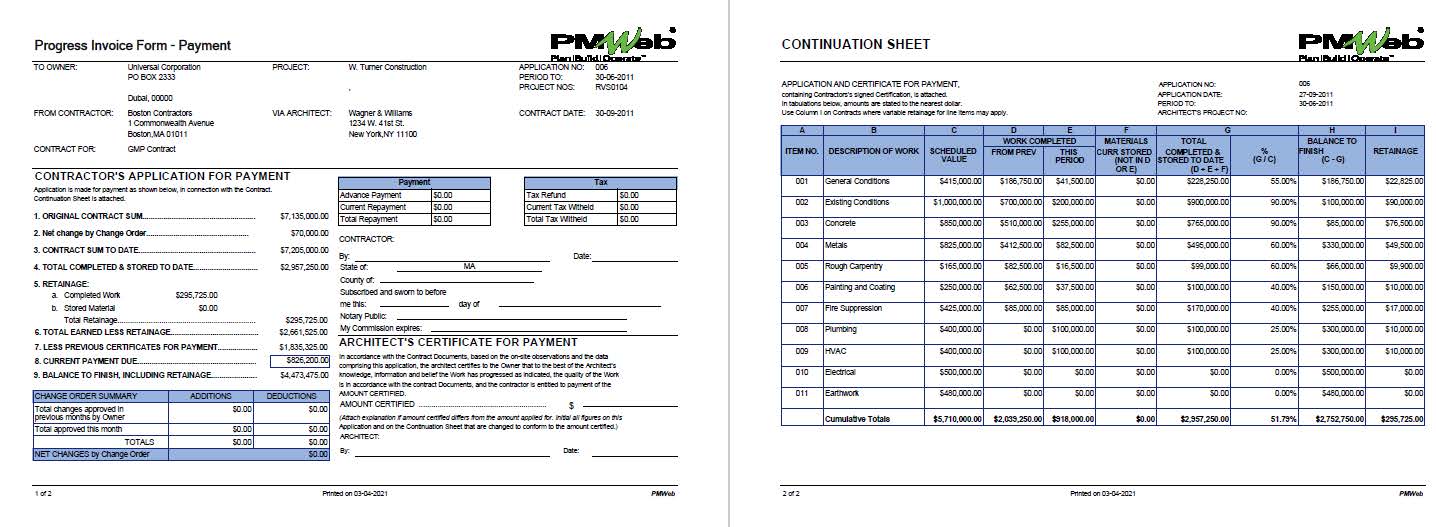
In addition, reports can be generated to provide a log or register of those earned income and actual cost records including requisitions, progress invoices, miscellaneous invoices, and timesheets. It should be noted that in addition to default ready-to-use PMWeb reports, the JV Contractor can design their own output forms to incorporate their branding and other format requirements.
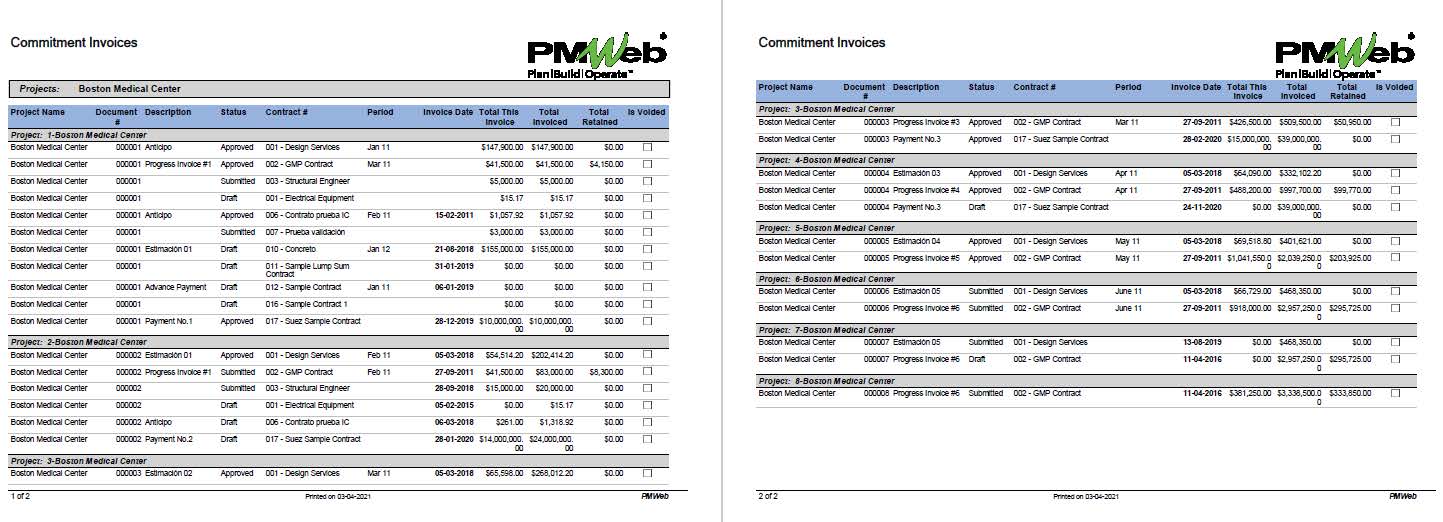
Another important report that can be also created for the JV Contractor is the Project Financial Performance Report Using Earned Value Method (EVM). This report will be based on the project budget, commitments, and other processes used to capture actual costs. The JV Income Contract will not be used in the EVM report.
The Schedule Variance (SV) will be calculated from the difference between Earned Value (EV) and Planned Value (PV) while the Cost Variance will be calculated from the difference between Earned Value (EV) and Actual Cost (AC). The Schedule Performance Index (SPI) will be calculated by dividing the Earned Value (EV) by the Planned Value (PV) while the Cost Performance Index (CPI) will be calculated by dividing the Earned Value (EV) by the Actual Cost (AC).
The Estimate to Complete (ETC) is the difference between the Budget at Completion (BAC) and Earned Value (EV) while the Estimate at Completion (EAC) will be the Estimate to Complete (ETC) plus the Actual Cost (AC). The Estimate to Complete (ETC) value can be adjusted by either adding pending changes and potential changes that have a high probability to be approved or by using the adjustments for the Estimate to Complete (ETC) or Performance Factor Index (PFI) captured in PMWeb Forecast module. Finally, the Variance at Completion (VAC) will be the difference between the Budget at Completion (BAC) and the Estimate at Completion (EAC).
The EVM report will be designed to include a table that will detail the EVM performance measures for each cost breakdown structure (CBS) level. The report will also include 3-months trend charts for Schedule and Cost Variances (SV and CV) as well as the Schedule and Cost Performance Indices (SPI and CPI). The report could be also designed to include other visuals to provide a better analysis of the JV Contract financial performance using the EVM method.
